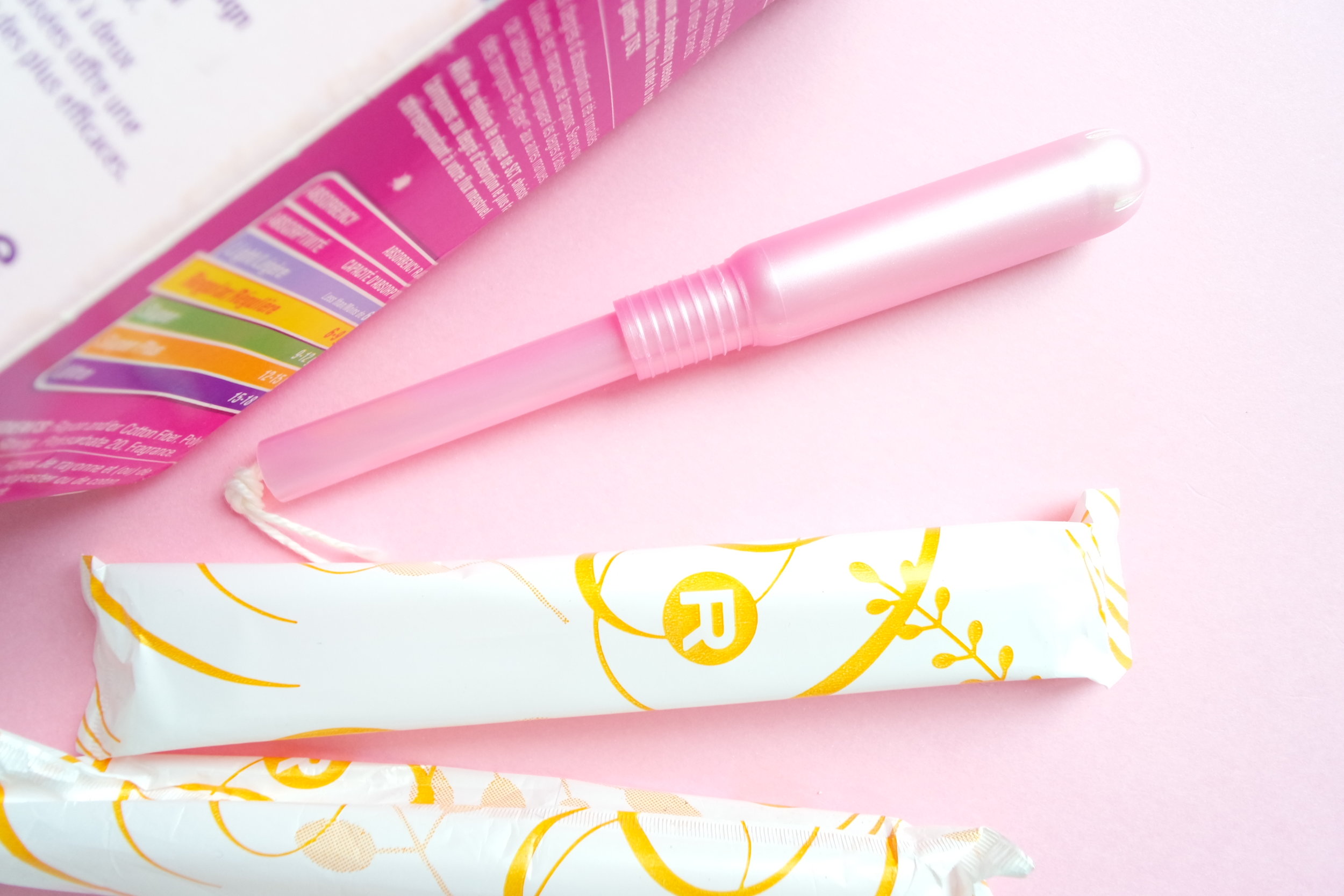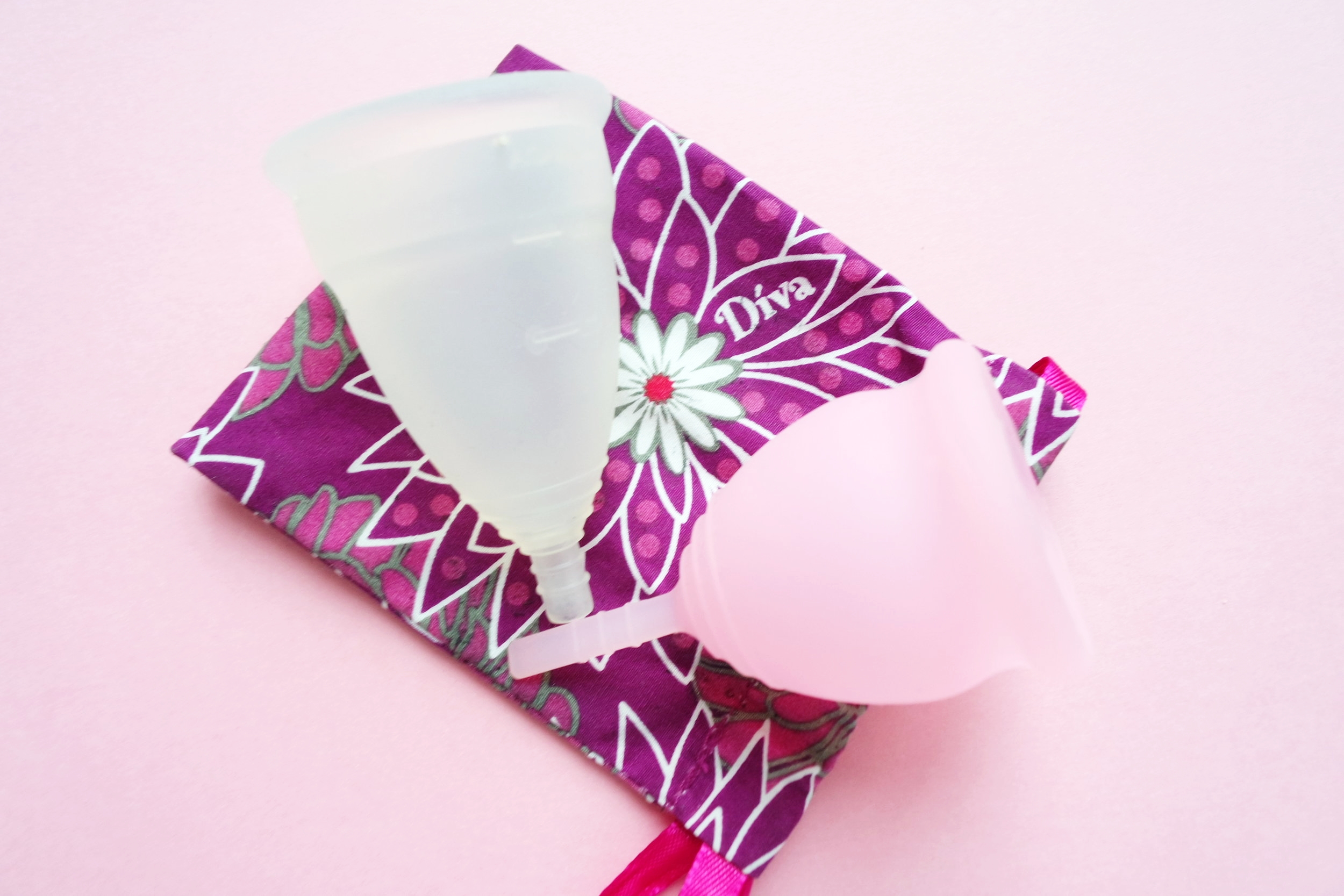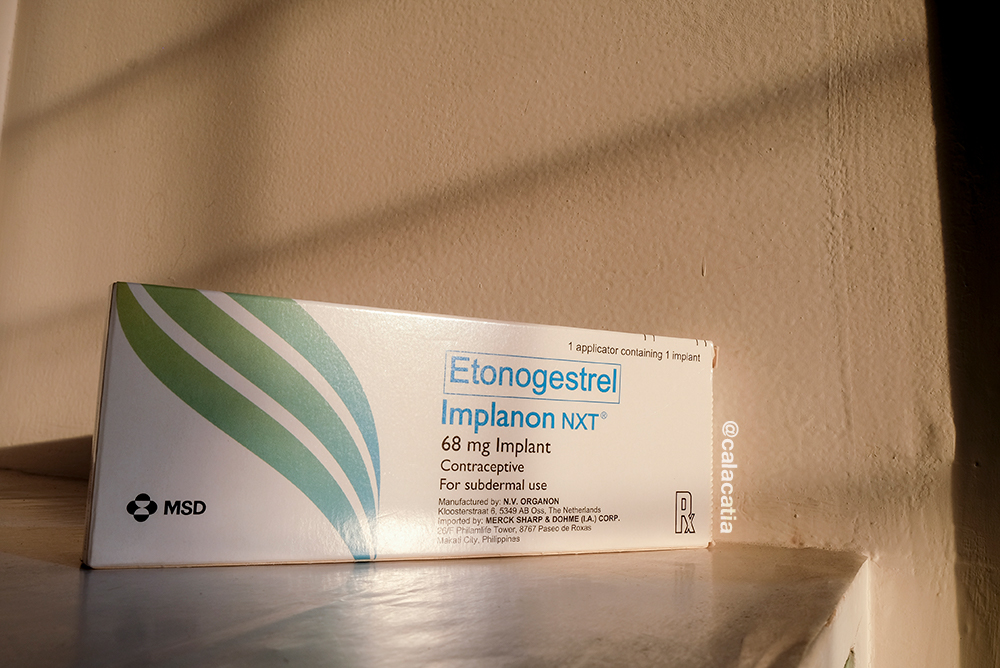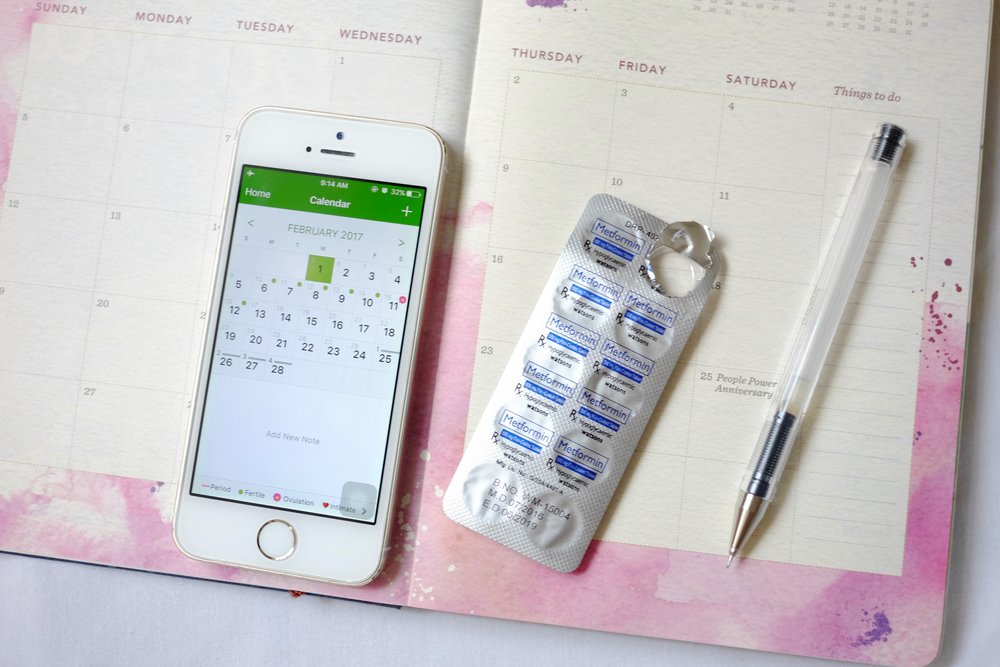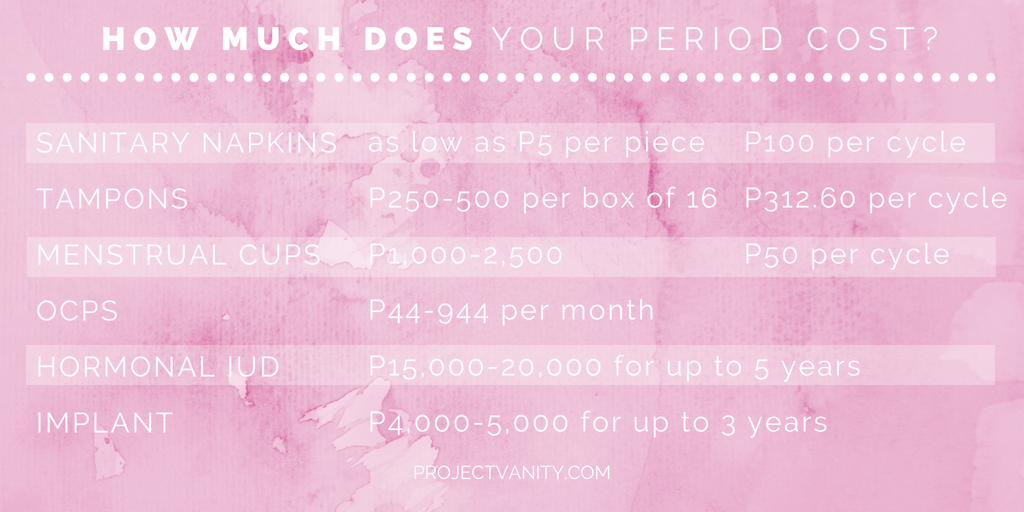Here are the different ways women deal with their periods + the cost of it over time
Let’s face it: when asked what are the worst things about being a girl, dealing with our monthly period is one of the first things that come to mind. The blood, the cramps, and the PMS we endure for decades is no walk in the park. Thankfully, living in the 21st century gives us more options on how we manage our blood flow. We asked Yna (24), Calacatia (27), and Annette (34), as well as PV girls Gett (24) and Den (34), who have tried different methods to manage their periods to share their experiences.
Sanitary Napkins
For most Pinay girls, a sanitary napkin probably would have been the very first solution you used to manage menstrual flow. It’s available everywhere (including your nearest sari-sari store),fairly inexpensive, and is a no-brainer to use. Back in the day, TVCs would even show demonstrations of how absorbent the napkins were by spilling blue liquid on them!
All five of our respondents said they used sanitary napkins for years and years before trying another method out. Despite the easy accessibility, though, they felt the need to explore other options. Napkins tend to be uncomfortable, plus they can move around and result in the dreaded “tagos” (when blood leaks out to your underwear and possibly the rest of your clothing and anything you sit on, yikes). It can also irritate the skin to the point of getting rashes, and the adhesive may even pull on pubic hair (ouch!)
Using sanitary napkins also has a negative impact on the environment because they are disposable, single-use products. Recently, reusable cloth napkins have become popular among those who want to reduce wastage. These are not very different from the pasadors our lolas used: a thick pad of cloth is simply secured on your underwear and used napkins can easily be laundered to be reused again. None of the respondents I talked to have tried these cloth napkins, but I imagine the downside is that you’d have to keep used napkins in your purse if you needed to change while away from home.
Tampons
A tampon is made of soft absorbent cotton in a cylindrical shape that is inserted into the vagina. It’s designed to absorb menstrual blood before it leaves the body. Our respondents agreed that tampons are comfortable to use and gave them more mobility to do physical activities, including swimming. Gett and Den also reported never experiencing any leakage with tampons.
Unlike napkins though, tampons aren’t as easily accessible locally. Annette, who was a tampon user for ten years, had to constantly ask relatives abroad to buy her tampons. On the other hand, Yna was able to source her tampons from local stores but noted the higher costs compared to napkins. Apart from being (mostly) imported products, she says, “It’s expensive because you need to have different sizes per month, depending on how heavy your flow is.” There is also a bit of a learning curve in usage, and you may possibly waste a tampon or two before figuring out how to use them properly.
Although very rare, tampon users also have a risk of getting Toxic Shock Syndrome (TSS). This is a potentially life-threatening bacterial infection that happens when the menstrual blood is trapped in the vagina. That’s why it’s very important for tampon users to change tampons every 4 to 6 hours. Den says, “It’s easy to forget they’re in there so I set alarms to remind me to change them.”
If you’re looking to do away with sanitary napkins, tampons are a great option. We’ve tackled most of the basic concerns here. Tampons are also single-use products but they can act as a stepping stone for using menstrual cups.
Menstrual cups
In Gett’s story, Everything You Need to Know about Menstrual Cups, she explains that “like tampons, menstrual cups are inserted into the vagina but they catch the blood in the bell-shaped cup rather than it getting absorbed by a cottony material.” These are meant to be reusable solutions; simply boil it to disinfect, and then it is ready for use again! They are becoming more easy to source locally through mostly online stores. All of the respondents have tried menstrual cups and voted this as their preferred method for dealing with their periods.
Yna says she purchased a menstrual cup because of her desire to switch to a zero-waste lifestyle while Calacatia says she loves it because she no longer gets caught off guard. She shares, “I can just pop it in a few days before my period!” Annette further explains, “It’s like a tampon, but better – no toxic shock syndrome to worry about. I can wear my cup for 12 hours straight before emptying.” She also appreciated how it made her more in touch with her body. “I’ve had to really push it in there, making me more aware of what my body is like. Cups also make my period feel cleaner (not messy). And I can also really learn more about my body by seeing how much I actually excrete. It’s amazing how what appears to be a lot in a napkin or tampon is actually just a few teaspoons’ worth in the cup.”
The slight drawback to menstrual cups is that it can have a high learning curve. Den had to try two different cups before finding one that fit her correctly. She says, “It’s not enough to choose a cup based on whether you’ve had kids or not. I had to figure out what size and shape would be most comfortable for me.” It’s also not cheap, with prices starting at about P1,000 for good quality brands, but it can last for as long as 10 years! Gett says, “It seems quite expensive at first but it comes out cheaper in the long run.”
Image via calacatia.wordpress.com
Hormonal contraceptives
Hormonal contraceptives come in different forms such as pills, injections, implants, and intrauterine devices (IUD). Regardless of the format, they all function the same way, which is to release progesterone, estrogen, or a combination of both.
The most common are oral contraceptive pills (OCP). Apart from being used as birth control, OCPs are also widely used to regulate periods and manage Polycystic Ovarian Syndrome (PCOS). Other possible advantages include a reduced menstrual flow, minimize menstrual cramps, and control acne. Den says, “It can take a while to find one compatible to your hormonal makeup but when you do, they make life so much easier! I always knew exactly when to expect my period, and my experience of cramps and other menstrual disorders was significantly lessened.” The pill is not without any possible side effects, though, which may include nausea, breast tenderness, headaches, and reduced sexual desire.
Quite recently, implants became available in the Philippines. A small plastic rod is implanted under the skin of the forearm and can remain there for up to three years. Calacatia shares that she was able to avail of an implant for free at the Likhaan Center for Women’s Health. When asked about the procedure, she told us that the local anesthetic was the most painful part of the process. She feels that it’s too early to report on any side effects yet, but as far as she can tell, it makes her tire easily.
Apart from regulating the menstrual cycle and reducing flow, some hormonal contraceptives can actually cause you to stop having periods for a short period of time. This can be a side effect of certain OCPs and implants, or a deliberate effect of continuous or extended-cycle pills. Delaying your period can be useful for the management of painful PMS, or to allow you to go period-free during important occasions like your wedding and honeymoon!
Combining different methods
Some girls may not use one method exclusively. For one thing, hormonal contraceptives generally do not eliminate menstruation and will have to be used in conjunction with other methods. Other girls also find it more convenient to alternate between different products. Annette recalls, “Tampons would be hard to change in public toilets. So my method was: start the day in a tampon and have a napkin ready underneath. When the tampon is full (usually some blood will show on the napkin), I take the tampon out and just proceed to use the napkin.” Den also cites the menstrual cup’s lack of portability. She says, “The cup needs to be sanitized with boiling water prior to usage, so it's not just something I can just tote around in my purse. Instead, I keep tampons in my kit for emergencies.”
All five of the women interviewed prefer menstrual cups for dealing with their periods. The mobility it offers plus the environmentally friendly features won them over. If you’re still deciding on which method would work best for you, here is a quick overview of the costs for a 5-day period.
Which methods have you tried? What do you like best? Would you be willing to try a new method?
Sources: Center for Young Women’s Health, EMedicine Health, Medicine Net, Cosmo.ph



